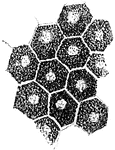
Head of an Eagle Owl
Head of an eagle owl. It has large eyes for seeing at night, and a hooked beak for snaring its prey.
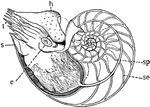
Pearly Nautilus
"Pearly Nautilus. e, eye; h, hood, a muscular portion of the foot which protects the softer parts; s,…

Perfect Eye
"A representation of the manner in which the image is formed upon the retina in the perfect eye. The…

Pochard
The pochard (or dun-hen) averages about nineteen and a half inches in length, and is found in parts…
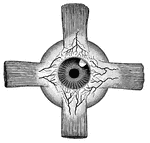
Attachment of the recti
"Showing the attachment of the recti, or straight muscles to the eyeball, also the distribution of arteries…

Redeye
"Is a very common fish in Europe; it is of brilliant colors, and very tenacious of life; it feeds on…

Refraction
"The following simple experiment illustrates the effect of refraction:—Place a silver coin, m,…

A Diagram of the Retina and Crystalline Lens
A diagram showing how an image is formed upon the retina by the crystalline lens.

The Position of the Retina in Near and Far Sight
A flattened shape of the globe of the eye causes farsightedness and an elongated shape of the globe…

Section of Retina
Perpendicular section of mammalian retina. Labels: A, layer of rods and cones; B, outer nuclear layer;…
The Structure of the Retina
Next to the choroid and comprising about 1/4 the entire thickness of the retina is a multitude of transparent,…

Retinula
"Diagram of a retinula of the central eye of a scorpion consisting of five retina-cells (ret), with…
Rhabdom
"Rhabdom of the same, consisting of five confluent rhabdomeres." — The Encyclopedia Britannica,…
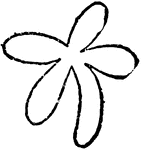
Rhabdom
"Transverse section of the rhabdom of a retinula of the scorpion's central eye, showing its five constituent…

Scorpion Eyes
"Development of the lateral eyes of a scorpion. h, Epidermic cell-layer; mes, mesoblastic connective…
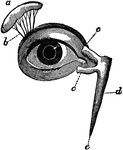
Tear Gland
The tear gland of the eye. The tears are carried from this factory b little ducts (b) and are poured…
Telescope
"A telescope is an instrument designed for the observation of distant objects, and consists essentially…

Telescope
"The eye-end of a telescope. The reader will recognize the micrometer previously described. L is a paraffin…
Galilean Telescope
"The Galilean telescope has a double-concave eye-lens that intercepts the rays before they reach the…
Reflecting Telescope
"The reflecting telescope has an objective a concave mirror, tecnically called a speculum. The images…
Terrestrial Telescope
"The spy-glass or terrestrial telescope avoids the inversion of the image by the interposition of two…
Test type
"The Actual Size of the Test Type, which shiykd be seen by the Normal Eye at a distance of Twenty Feet."…
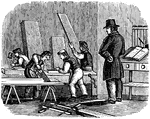
The Eye of the Master Does More Work than Both His Hands
"The workmen all their master will obey, / They plane and saw, and dare not stop to play; / Each boy…

Vertebrate Eye
"Diagrams illustrating two stages in the development of the vertebrate eye. A, showing the relation…
